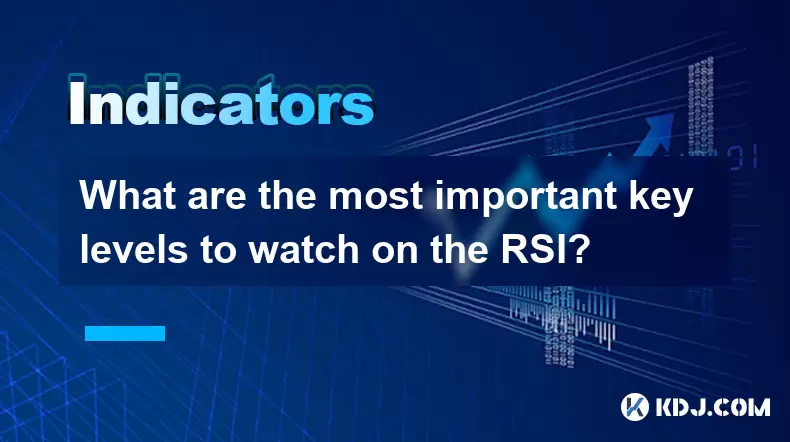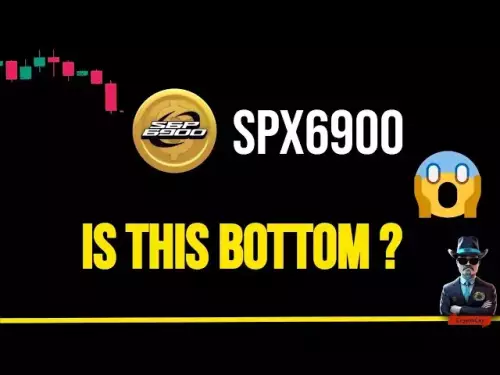-
 Bitcoin
Bitcoin $113100
-1.74% -
 Ethereum
Ethereum $4800
1.16% -
 XRP
XRP $3.041
0.36% -
 Tether USDt
Tether USDt $0.9999
0.02% -
 BNB
BNB $876.6
-0.40% -
 Solana
Solana $205.1
0.96% -
 USDC
USDC $0.0000
0.00% -
 Dogecoin
Dogecoin $0.2345
-0.10% -
 TRON
TRON $0.3629
0.40% -
 Cardano
Cardano $0.9260
1.91% -
 Chainlink
Chainlink $26.20
0.28% -
 Hyperliquid
Hyperliquid $46.04
2.89% -
 Sui
Sui $3.722
0.22% -
 Stellar
Stellar $0.4113
-0.53% -
 Ethena USDe
Ethena USDe $1.000
0.03% -
 Bitcoin Cash
Bitcoin Cash $590.3
0.39% -
 Avalanche
Avalanche $25.82
-0.01% -
 Hedera
Hedera $0.2504
-0.92% -
 Litecoin
Litecoin $119.1
-1.33% -
 UNUS SED LEO
UNUS SED LEO $9.598
0.03% -
 Toncoin
Toncoin $3.315
-1.69% -
 Shiba Inu
Shiba Inu $0.00001308
-1.02% -
 Uniswap
Uniswap $11.06
-2.10% -
 Polkadot
Polkadot $4.149
-1.10% -
 Dai
Dai $1.000
0.03% -
 Aave
Aave $350.7
-1.07% -
 Cronos
Cronos $0.1587
0.97% -
 Bitget Token
Bitget Token $4.664
-0.71% -
 Monero
Monero $274.5
3.42% -
 Ethena
Ethena $0.7021
-4.70%
What are the most important key levels to watch on the RSI?
The RSI is a momentum oscillator that identifies overbought (above 70) and oversold (below 30) conditions, with the 50 level signaling momentum shifts—key for timing entries in volatile crypto markets.
Aug 10, 2025 at 05:30 pm

Understanding the RSI and Its Core Functionality
The Relative Strength Index (RSI) is a momentum oscillator that measures the speed and change of price movements. It operates on a scale from 0 to 100 and is primarily used to identify overbought and oversold conditions in financial markets, including cryptocurrencies. Traders rely on the RSI to anticipate potential reversals or continuations in price trends. The standard calculation uses a 14-period average, although traders often adjust this to suit their strategies. The formula involves comparing average gains to average losses over the specified period, smoothing the data to produce a readable oscillating line.
Key Threshold: The 70 Level – Identifying Overbought Conditions
One of the most critical levels to monitor on the RSI is 70. When the RSI crosses above this threshold, the asset is generally considered overbought. In the context of cryptocurrency trading, this may suggest that the price has risen too quickly and could be due for a pullback or correction. However, in strong uptrends, the RSI can remain above 70 for extended periods, so this level should not be interpreted in isolation.
- Monitor for divergences between price and RSI when above 70
- Watch for bearish candlestick patterns at resistance levels coinciding with RSI > 70
- Consider profit-taking or tightening stop-loss orders when RSI sustains above 70
- Use volume confirmation to validate whether the overbought condition is supported by strong buying pressure
A failure of price to make a new high while RSI remains above 70 could indicate weakening momentum, potentially leading to a reversal.
Key Threshold: The 30 Level – Detecting Oversold Conditions
The 30 level on the RSI is the counterpart to the 70 level and signals oversold conditions when the RSI drops below it. In crypto markets, which are prone to sharp sell-offs, an RSI below 30 may suggest that an asset has been sold off excessively and could be poised for a rebound.
- Look for bullish divergence, where price makes a lower low but RSI forms a higher low
- Confirm with support levels on the price chart aligning with RSI < 30
- Observe candlestick reversal patterns such as hammer or bullish engulfing formations
- Check for increased volume on upward moves emerging from below 30
It is essential to recognize that in strong downtrends, RSI can stay below 30 for long durations. Therefore, traders should not assume an automatic bounce simply because the RSI enters oversold territory.
Midline Crossover at 50: Gauging Momentum Shifts
While 30 and 70 are the primary thresholds, the 50 level serves as a vital midpoint that reflects the balance between buying and selling pressure. When the RSI crosses above 50, it indicates that upward momentum is strengthening. Conversely, a drop below 50 suggests increasing bearish control.
- A sustained RSI above 50 in an uptrend confirms bullish dominance
- A break below 50 after a rally may signal momentum erosion
- Use 50 as a dynamic filter: only take long positions when RSI is above 50, and short positions when below
- Combine with moving averages—for example, only consider bullish signals when both RSI > 50 and price is above the 200-day MA
This level is particularly useful in trending markets, where maintaining position alignment with momentum can improve trade accuracy.
Extreme RSI Levels: 80 and 20 in Cryptocurrency Volatility
Due to the high volatility of cryptocurrencies, some traders adjust their interpretation of extreme RSI values. Levels such as 80 and 20 are sometimes used instead of 70 and 30 to filter out noise and avoid premature signals.
- When RSI exceeds 80, it may indicate extreme overbought conditions, often seen during parabolic rallies
- Readings below 20 can signal extreme oversold states, common during panic sell-offs or flash crashes
- These levels are more reliable in short-term timeframes like 1-hour or 4-hour charts
- Use them in conjunction with Bollinger Bands or volume spikes to confirm exhaustion
For instance, if Bitcoin’s RSI hits 82 during a 30% weekly surge, it may suggest overheated conditions, especially if accompanied by a long upper wick and declining volume on new highs.
Hidden and Regular Divergences Around Key RSI Levels
Divergence analysis enhances the utility of RSI levels. A regular bearish divergence occurs when price makes a higher high but RSI forms a lower high, typically near or above 70. This warns of weakening momentum. A regular bullish divergence happens when price records a lower low while RSI prints a higher low, usually near or below 30.
- Hidden bullish divergence: Price makes a higher low, RSI makes a higher low—confirms trend continuation, often after a pullback to 50
- Hidden bearish divergence: Price makes a lower high, RSI makes a lower high—suggests downtrend resumption after a rally toward 50
- Plot divergence lines manually or use charting tools with built-in divergence detection
- Validate divergences with horizontal support/resistance or trendline breaks
These patterns are especially effective on the 4-hour and daily charts, where false signals are less frequent.
Frequently Asked Questions
What timeframes are best for observing RSI key levels in crypto trading?
The 1-hour, 4-hour, and daily timeframes are most effective for identifying reliable RSI signals. Shorter timeframes like 5-minute charts generate excessive noise, while longer timeframes provide stronger confirmation. For day trading, the 1-hour and 4-hour charts offer a balanced view of momentum. Swing traders benefit from daily RSI readings aligned with weekly trends.
Can RSI be used alone to make trading decisions?
No, RSI should not be used in isolation. It works best when combined with price action analysis, support/resistance levels, volume, and other indicators such as moving averages or MACD. For example, an RSI reading below 30 at a major Fibonacci support level carries more weight than one in open space.
How do I adjust RSI settings for different cryptocurrencies?
While the default 14-period setting works for most cases, highly volatile altcoins may benefit from a shorter period like 9 to increase sensitivity. Conversely, for stablecoins or less volatile assets, a 21-period RSI may reduce false signals. Always backtest adjustments on historical data before live application.
Does RSI work the same across all crypto market conditions?
RSI behaves differently in trending versus ranging markets. In strong trends, it can remain overbought or oversold for long periods, making traditional signals less reliable. In sideways markets, RSI oscillates predictably between 30 and 70, making it ideal for mean-reversion strategies. Always assess the broader market structure before interpreting RSI levels.
Disclaimer:info@kdj.com
The information provided is not trading advice. kdj.com does not assume any responsibility for any investments made based on the information provided in this article. Cryptocurrencies are highly volatile and it is highly recommended that you invest with caution after thorough research!
If you believe that the content used on this website infringes your copyright, please contact us immediately (info@kdj.com) and we will delete it promptly.
- Ozak AI, Binance, and Coinbase: Navigating the Crypto Landscape in 2025
- 2025-08-25 05:05:13
- Coinbase, Hacker, and Solana: Decoding the $8M Heist
- 2025-08-25 05:30:12
- Rare Find: The 1-Cent Coin Worth €6,000!
- 2025-08-25 02:45:28
- Hacktivism, Tokenization, and the Decentralized Future: A New Yorker's Take
- 2025-08-25 02:45:28
- PayPal, Stablecoin, and Boost: Riding the Wave of Digital Finance
- 2025-08-25 04:42:18
- UNI Price Gears Up for New Cycle: Analyst Outlook Bullish
- 2025-08-25 02:50:11
Related knowledge

What does it mean when the +DI and -DI cross frequently in the DMI indicator but the ADX is flattening?
Aug 11,2025 at 03:15am
Understanding the DMI Indicator ComponentsThe Directional Movement Index (DMI) is a technical analysis tool composed of three lines: the +DI (Positive...

What does the sudden appearance of a "dark cloud cover" candlestick pattern during an uptrend indicate?
Aug 13,2025 at 11:35am
Understanding the 'Dark Cloud Cover' Candlestick PatternThe dark cloud cover is a bearish reversal pattern in technical analysis that typically appear...

What does it mean when the moving average, MACD, and RSI all send buy signals simultaneously?
Aug 11,2025 at 01:42pm
Understanding the Convergence of Technical IndicatorsWhen the moving average, MACD, and RSI all generate buy signals at the same time, traders interpr...

What does it mean when both the KDJ indicator and the RSI show overbought signals simultaneously?
Aug 13,2025 at 11:35am
Understanding the KDJ Indicator in Cryptocurrency TradingThe KDJ indicator is a momentum oscillator derived from the Stochastic Oscillator, widely use...

What does it mean when the price is trading above the SAR indicator but the red dots are densely packed?
Aug 09,2025 at 11:49pm
Understanding the SAR Indicator and Its Visual SignalsThe SAR (Parabolic Stop and Reverse) indicator is a technical analysis tool used primarily to de...

What does it mean when the candlestick chart forms a "Morning Star" but trading volume is sluggish?
Aug 12,2025 at 06:28pm
Understanding the Morning Star Candlestick PatternThe Morning Star is a three-candle bullish reversal pattern commonly observed in cryptocurrency pric...

What does it mean when the +DI and -DI cross frequently in the DMI indicator but the ADX is flattening?
Aug 11,2025 at 03:15am
Understanding the DMI Indicator ComponentsThe Directional Movement Index (DMI) is a technical analysis tool composed of three lines: the +DI (Positive...

What does the sudden appearance of a "dark cloud cover" candlestick pattern during an uptrend indicate?
Aug 13,2025 at 11:35am
Understanding the 'Dark Cloud Cover' Candlestick PatternThe dark cloud cover is a bearish reversal pattern in technical analysis that typically appear...

What does it mean when the moving average, MACD, and RSI all send buy signals simultaneously?
Aug 11,2025 at 01:42pm
Understanding the Convergence of Technical IndicatorsWhen the moving average, MACD, and RSI all generate buy signals at the same time, traders interpr...

What does it mean when both the KDJ indicator and the RSI show overbought signals simultaneously?
Aug 13,2025 at 11:35am
Understanding the KDJ Indicator in Cryptocurrency TradingThe KDJ indicator is a momentum oscillator derived from the Stochastic Oscillator, widely use...

What does it mean when the price is trading above the SAR indicator but the red dots are densely packed?
Aug 09,2025 at 11:49pm
Understanding the SAR Indicator and Its Visual SignalsThe SAR (Parabolic Stop and Reverse) indicator is a technical analysis tool used primarily to de...

What does it mean when the candlestick chart forms a "Morning Star" but trading volume is sluggish?
Aug 12,2025 at 06:28pm
Understanding the Morning Star Candlestick PatternThe Morning Star is a three-candle bullish reversal pattern commonly observed in cryptocurrency pric...
See all articles

























































































